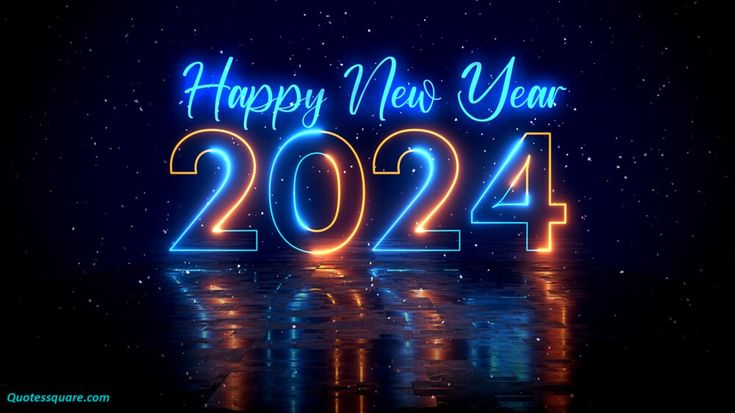Title: The Evolution of New Year Celebrations: A Historical Journey towards Happiness
As the clock strikes midnight, people around the world come together to bid farewell to the old year and welcome the new one with open arms. The celebration of the New Year is a universal phenomenon that transcends cultural, religious, and geographical boundaries. It is a time of reflection, resolutions, and, most importantly, joy. This essay delves into the rich history of New Year celebrations, exploring their evolution over time and the various traditions that contribute to the global happiness associated with the turning of the calendar.
Ancient Roots:
The celebration of the New Year is deeply rooted in ancient civilizations, where the transition from one year to the next was often linked to astronomical events, agricultural cycles, or religious observances. One of the earliest recorded New Year celebrations dates back to ancient Babylon around 2000 BCE, where the new year coincided with the vernal equinox in late March. The Babylonians engaged in elaborate festivities, including religious rituals and the crowning of a new king.
Similarly, ancient Egyptians celebrated the New Year in conjunction with the annual flooding of the Nile River, a vital event for their agricultural prosperity. The Chinese New Year, with its origins traced back over 4,000 years, is determined by the lunar calendar and is marked by various traditions such as dragon dances, fireworks, and family reunions.
The Julian Calendar and Roman Influence:
The evolution of New Year celebrations continued with the introduction of the Julian calendar by Julius Caesar in 45 BCE. This calendar marked January 1st as the beginning of the year, aligning with the solar year. The Romans, who were known for their grandiose celebrations, dedicated the first day of the year to Janus, the god of beginnings and transitions. This tradition influenced the name of the month “January.”
However, the celebration of the New Year faced challenges in various societies, as different cultures continued to observe the beginning of the year at different times. The adoption of January 1st as the universal New Year did not occur immediately, and it took centuries for this transition to be widely accepted.
Medieval Christian Influence:
With the spread of Christianity in medieval Europe, the celebration of the New Year underwent further changes. In 567 CE, the Council of Tours abolished January 1st as the start of the year, emphasizing the Christian significance of March 25th, the Feast of the Annunciation. However, this decision was not universally adopted, and different regions continued to follow diverse New Year dates.
During the Renaissance, the Gregorian calendar, introduced by Pope Gregory XIII in 1582, replaced the Julian calendar. This reform aimed to bring the calendar year more in line with the solar year, correcting inaccuracies that had accumulated over centuries. The Gregorian calendar reaffirmed January 1st as the start of the year, and many Catholic countries readily embraced this change.
Cultural Diversification:
As global exploration and trade expanded in the following centuries, different cultures and traditions intermingled, influencing the way New Year celebrations were conducted. The exchange of customs and practices enriched the diversity of festivities around the world.
In Scotland, the celebration of Hogmanay became synonymous with New Year’s Eve. The traditions associated with Hogmanay, such as the first-footing custom and the singing of “Auld Lang Syne,” have become iconic elements of New Year celebrations worldwide. Similarly, in Japan, the New Year, or “Oshogatsu,” is a time for family gatherings, feasting on traditional foods, and participating in religious ceremonies.
The Modern New Year’s Eve:
The 20th century witnessed the globalization of New Year celebrations, with the advent of mass media, telecommunications, and transportation. As the world became more interconnected, people from diverse cultures began to share and adopt different customs and festivities associated with the New Year.
One of the most iconic New Year celebrations is the countdown to midnight in Times Square, New York City. The tradition of dropping the crystal ball has become a symbol of the transition to the new year for millions of people around the world. This event, broadcast globally, unites people from various cultures in a collective moment of anticipation and joy.
Fireworks have also become synonymous with New Year celebrations, with cities worldwide putting on spectacular displays to mark the occasion. The vivid colors and explosive patterns in the night sky evoke a sense of wonder and symbolize the hope and optimism associated with the new beginning.
Cultural Traditions and Superstitions:
Throughout history, various cultural traditions and superstitions have shaped the way people approach the New Year. In many cultures, there is a belief that the actions and events of the first day of the year set the tone for the months to come. As a result, people engage in specific activities to ensure good luck, prosperity, and happiness in the coming year.
In Spain and many Latin American countries, it is a tradition to eat twelve grapes at the stroke of midnight, with each grape symbolizing good luck for each month of the upcoming year. In some Asian cultures, cleaning the house before the New Year is believed to sweep away bad luck and make way for good fortune. These customs add a layer of cultural richness and meaning to the celebration of the New Year.
New Year’s Resolutions:
The practice of making New Year’s resolutions is a widespread tradition that reflects the human desire for self-improvement and personal growth. The concept of resolving to do better in the coming year has ancient roots, with the Babylonians believed to be among the first to make promises to the gods at the start of each year.
Whether it is committing to a healthier lifestyle, pursuing educational goals, or fostering better relationships, the act of setting resolutions provides individuals with a sense of purpose and direction. However, the success of these resolutions often depends on factors such as commitment, perseverance, and realistic goal-setting.
The Global Impact of Technology:
In the 21st century, technology has played a pivotal role in transforming the way people celebrate the New Year. Social media platforms, live streaming, and video calls have enabled individuals to connect with friends and family around the world, fostering a sense of global unity during the celebration.
The advent of virtual celebrations became particularly prominent during the COVID-19 pandemic, when restrictions and lockdowns limited physical gatherings. Virtual parties, online events, and live-streamed celebrations allowed people to participate in New Year festivities while adhering to safety guidelines.
Happiness as a Common Theme:
Despite the diverse cultural and historical backgrounds of New Year celebrations, happiness emerges as a common theme. The joy associated with welcoming a new beginning, leaving behind the challenges of the past, and embracing hope for the future unites people across continents and time periods.
The act of coming together with loved ones, expressing gratitude, and engaging in festive activities contributes to a collective sense of happiness and positivity. Whether it is the sharing of a midnight kiss, the joyous sound of fireworks, or the warmth of family gatherings, these moments create lasting memories and contribute to the overall sense of happiness associated with the New Year.
Conclusion:
The celebration of the New Year has evolved significantly over the centuries, reflecting the cultural, religious, and social dynamics of different civilizations. From ancient rituals tied to astronomical events to modern global festivities, the New Year serves as a timeless symbol of renewal, hope, and the pursuit of happiness.
As we embark on each new year, it is essential to recognize and appreciate the rich tapestry of traditions that have shaped the way we celebrate. Whether through ancient customs, cultural traditions, or contemporary global events, the New Year remains a testament to our shared humanity and the universal desire for joy, prosperity, and fulfillment.
In the grand tapestry of history, the celebration of the New Year stands as a testament to the resilience of human spirit and the enduring pursuit of happiness that transcends borders, cultures, and time itself.











of course like your website but you have to check the spelling on several of your posts A number of them are rife with spelling issues and I in finding it very troublesome to inform the reality on the other hand I will certainly come back again
Wow wonderful blog layout How long have you been blogging for you make blogging look easy The overall look of your site is great as well as the content